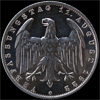Is their any structure to your collecting?
Do you collect one type of coin e.g. Farthing, a particular monarch e.g. George III etc. or is your collection just random pieces that take your eye?
12 members have voted
-
1. Do you collect one type of coin e.g. Farthing, a particular monarch e.g. George III etc. or is your collection just random pieces that take your eye?
-
It is totally structured. I only collect a particular theme4
-
It is sturctured with deviations7
-
No, mine is totally random. I take whatever I like0
-

Recommended Posts
Join the conversation
You can post now and register later. If you have an account, sign in now to post with your account.